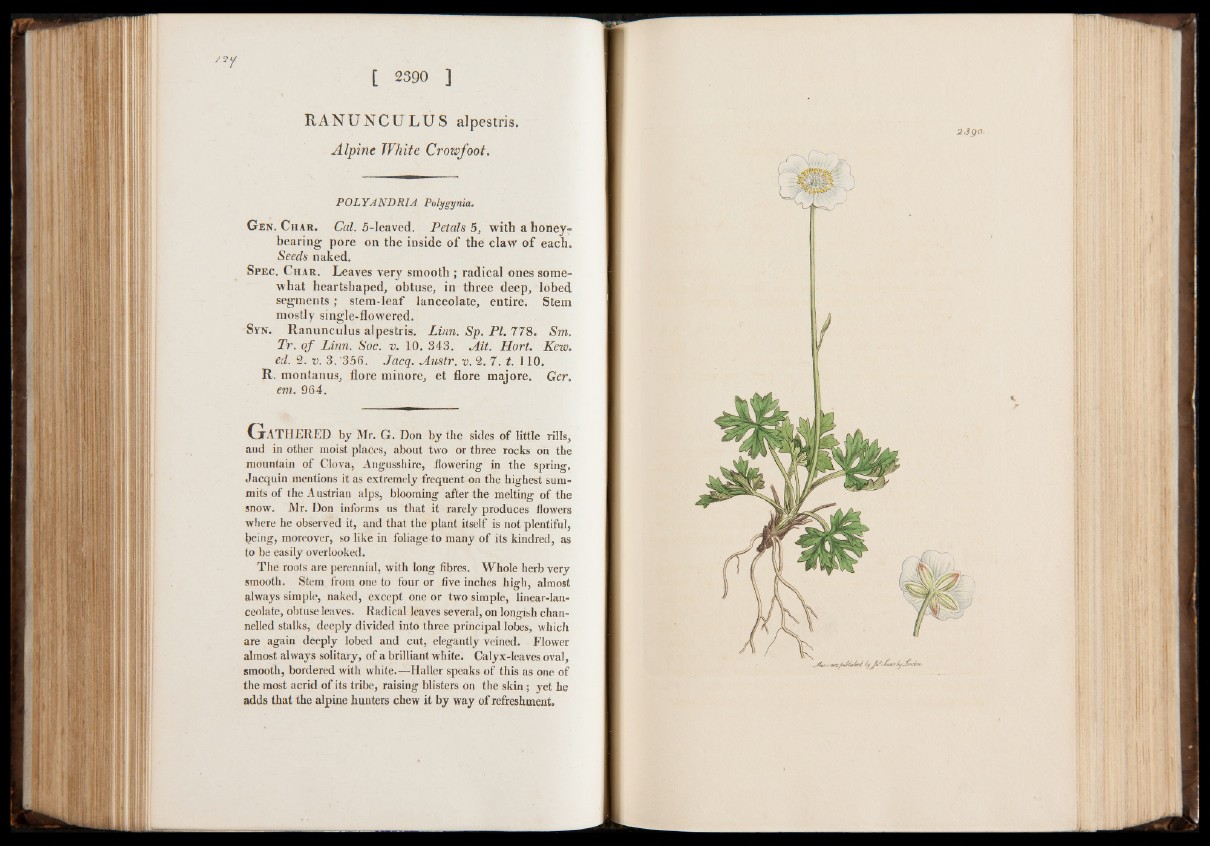
[ 2390 ]
RANUNCULUS alpestris.
Alpine White Crowfoot.
POLYANDRIA Polygynia.
Gen. Char. Cat. 5-leaved. Petals 5, with a honeybearing
pore on the inside of the claw o f each.
Seeds naked.
Spec. Char. Leaves very smooth ; radical ones somewhat
heartshaped, obtuse, in three deep, lobed
segments ; stem-leaf lanceolate, entire. Stem
mostly single-flowered.
Syn. Ranunculus alpestris. Linn. Sp. PI. 778. Sm.
Tr. of Linn. Soc. v. 10. 343. Ait. Hort. Kew.
ed. 2. v. 3.'356. Jacq. Austr. v. 2. 7 . t. 1 10.
R. montanus, flore minore, et flore majore. Ger.
em. 964.
G a t h e r e d by Mr. G. Don by the sides of little rills,
and in other moist places, about two or three rocks on the
mountain of Clova, Angusshire, flowering in the spring.
Jacquin mentions it as extremely frequent on the highest summits
of the Austrian alps, blooming after the melting of the
snow. Mr. Don informs us that it rarely produces flowers
where he observed it, and that the plant itself is not plentiful,
being, moreover, so like in foliage to many of its kindred, as
to be easily overlooked.
The roots are perennial, with long fibres. Whole herb very
smooth. Stem from one to four or five inches high, almost
always simple, naked, except one or two simple, linear-lanceolate,
obtuse leaves. Radical leaves several, on longish channelled
stalks, deeply divided into three principal lobes, which
are again deeply lobed and cut, elegantly veined. Flower
almost always solitary, of a brilliant white. Calyx-leaves oval,
smooth, bordered with white.— Haller speaks of this as one of
the most acrid of its tribe, raising blisters on the skin; yet he
adds that the alpine hunters chew it by way of refreshment.